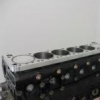Project Rb31dett. The Development Of My Open Deck Rb Engine And The Quest For More Torque!
Announcements
-
Similar Content
-
Latest Posts
-
www.rollracing.com.au tickets aren’t live yet
-
By Dose Pipe Sutututu · Posted
Hahah look at that smile 😂 Just like those ones on IG where they compare the husband in family photos vs husband going fishing lol. I don't think I'll participate this time, clutch isn't in and also the last time I went there were too many numpties on the cruise sessions. Nearly caused a few accidents holding up people and a few guys initiating massive kerb to kerb drifts with heaps of cars right behind them. Not to mention, there were guys on the track session using it as a power cruise session. -
Is there an actual website thingie for peoples who don't have Facebooks? Cheers
-
By soviet_merlin · Posted
All Jap Day is coming up again! 13th of July this year. Are you going? Tickets go on sale on Wednesday 6pm. Please let Quang know as well. https://m.facebook.com/photo.php?fbid=1163155775853542 I still get shit from my wife for this photo because it is the happiest she has ever seen me. And it's not with her, it's in someone else's car. Quang's EVO is sick, but that rotary wagon flying past was absolutely bonkers. -
By Dose Pipe Sutututu · Posted
What I suggest doesn't have a 40° delta and won't have all your lurching, idle hunting issues. Not to mention it's how most shops do it too. So yes on theory your method "works" however once it goes into that hunt it takes much longer to settle as the PID idle strategy is working off it's tits to try target the set RPM.
-






Recommended Posts
Create an account or sign in to comment
You need to be a member in order to leave a comment
Create an account
Sign up for a new account in our community. It's easy!
Register a new accountSign in
Already have an account? Sign in here.
Sign In Now